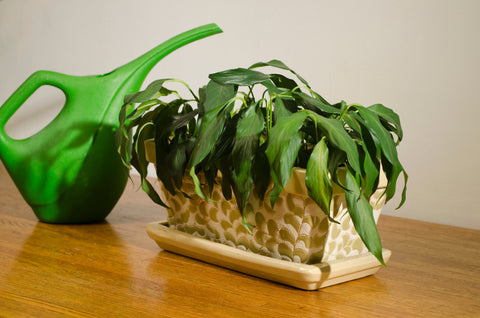Imagine moving home? It's pretty stressful right?
Humans are often referred to as creatures of habit. We form routines and get comfortable with our surroundings and what is known and familiar to us. Plants are much the same. In their natural environment or habitat, they do not move homes. They get comfortable in their environment and the nutrients provided to them by the soil. So, naturally, plants do not like being moved.

When we move seedlings and established plants from one place to another, including into larger pots, the ground, or into water in the form of aquaponics, plants experience Transplant Shock. While it is mostly unavoidable, transplant shock can range from mild to severe.
The symptoms of Transplant Shock include difficulty rooting and signs of stress on the leaves such as yellowing or leaves falling. The plant may also start wilting or showing other discolouration such as browning. In severe cases, the plant does not recover and dies. In mild cases, the plant may lose a few leaves but will recover and grow strong and settled.
We are here to help provide guidance to lessen the Transplant Shock that your plants might feel when you transplant them.
The first step to minimising transplant shock is the time of day that you transplant. It is best to transplant seedlings and established plants during the cooler times of the day, so early morning or late evening. Do everything you can to avoid transplanting during the hottest time of the day.
When removing the plant or seedling, remove the plant as gently as possible, causing as little damage to the root ball as you can. Unless the plant is rootbound in the pot, you do not need to loosen the roots or remove any kind of soil from the root ball - think of this soil as a security blanket for the plant. It is being moved to a new home, and this soil is all that is left that the plant is familiar with.

Before placing the plant in its new home, dig the hole to twice the size of the root ball and to the same depth. Sprinkle in some slow-release pelleted fertiliser (such as Ludwigs Vigorosa) and give the empty whole a light water. This will reduce the temperature of the soil and help in preventing transplant shock. Gently place the plant into the middle of the hole and be sure not to plant it too deep or too shallow, the top level of the root ball should be in line with the top of the hole.
Fill in the empty area around the root ball with the soil. Give your plant a light water to encourage settling. Do not let the transplanted seedling or plant dry out while it is establishing itself in its new home. Transplant Shock is more likely to occur when the seedling is not getting enough water, but be sure not to over water as the roots may start to rot.


